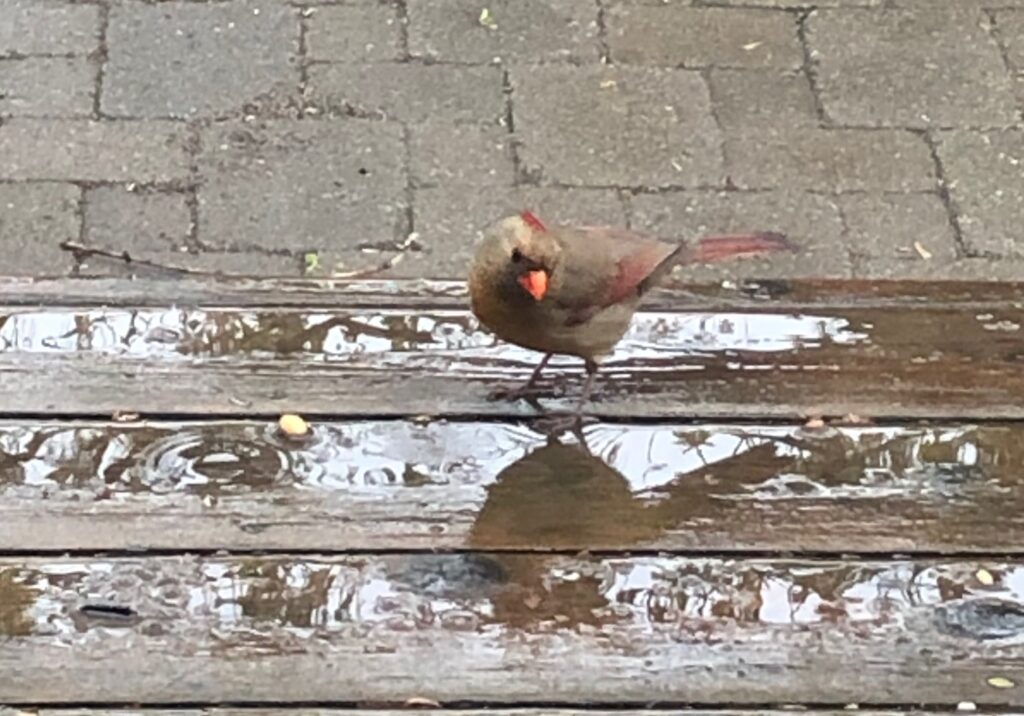
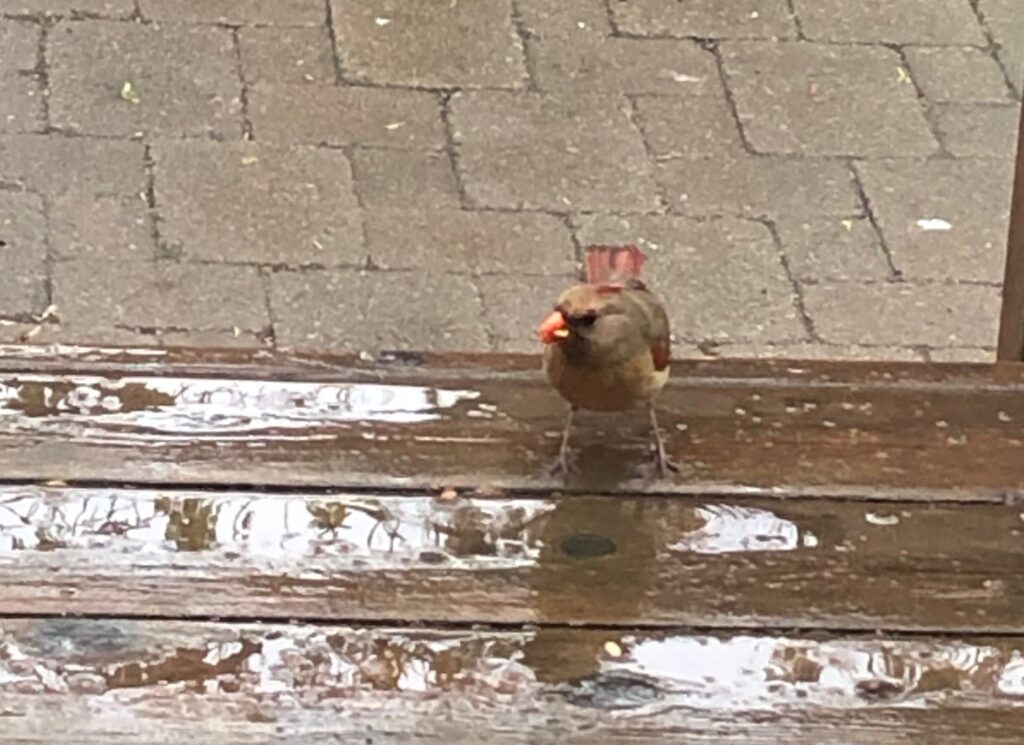
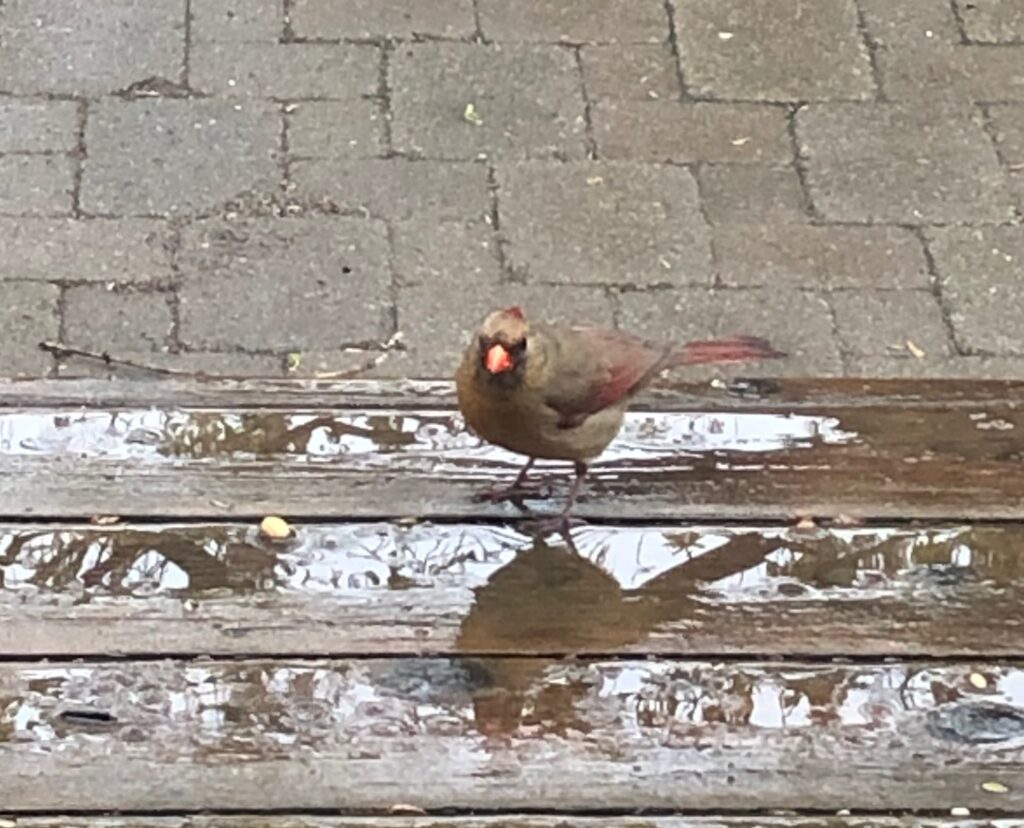



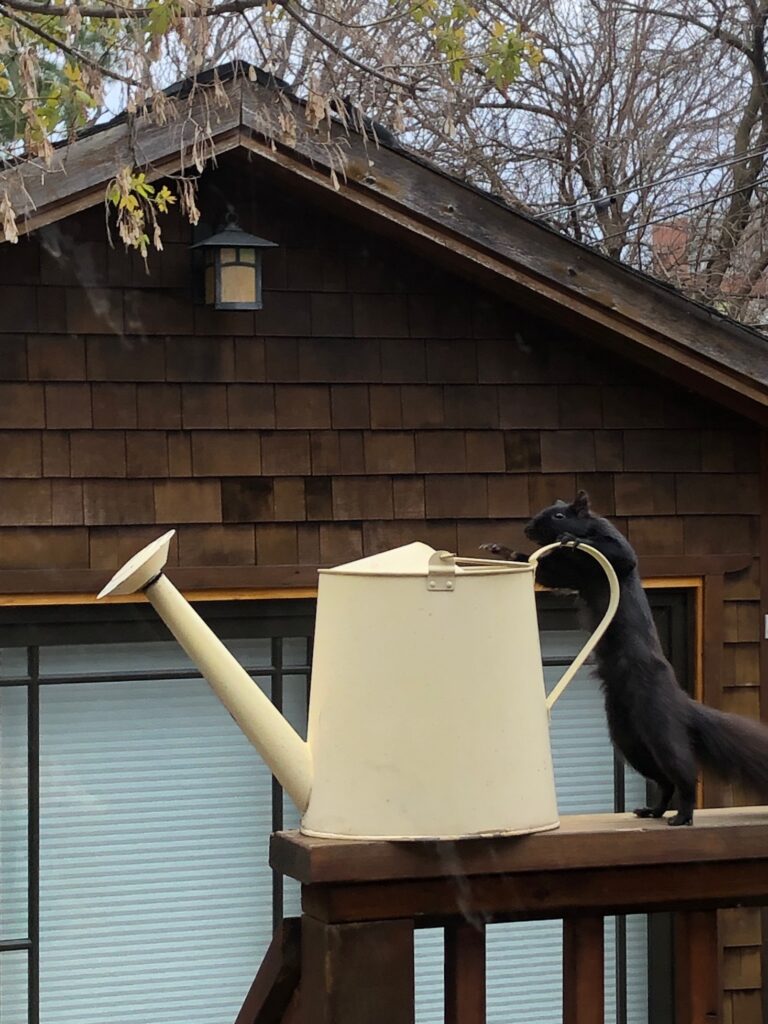
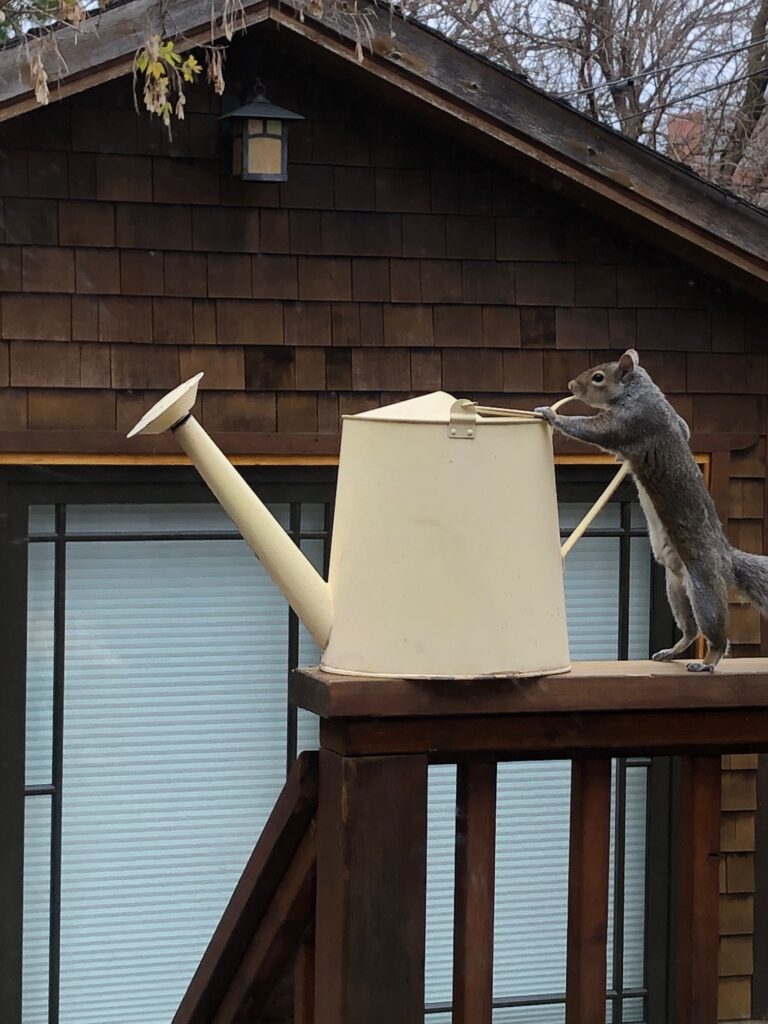
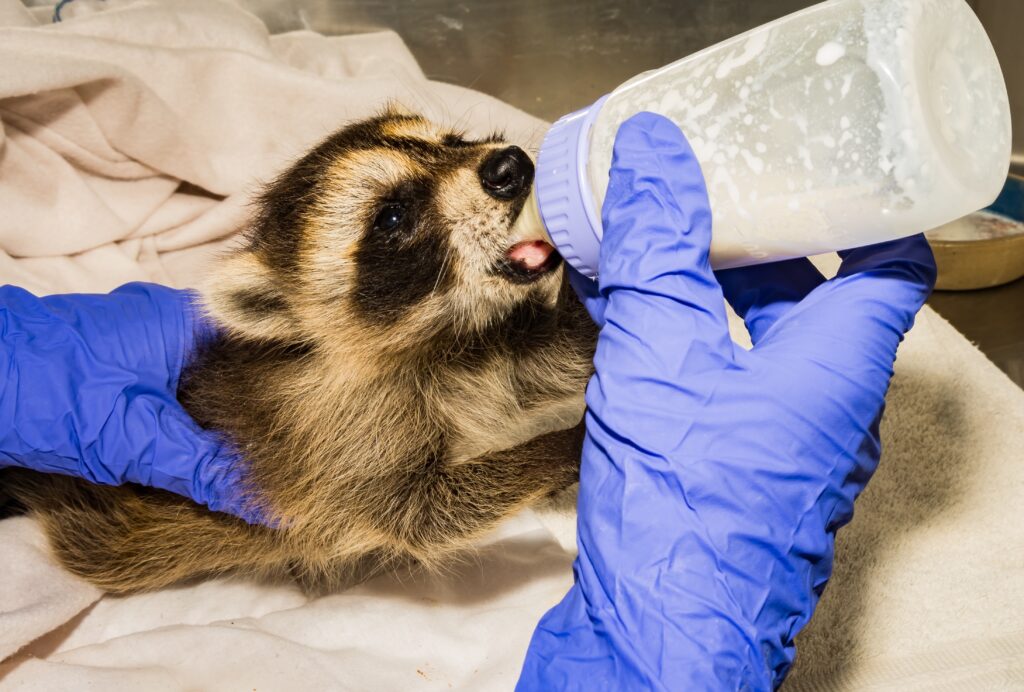
Orphaned babies are now coming in to care at the wildlife centre. Although I am concerned about there being enough staff and volunteers to care for and feed them as often as is needed, and worried about the ones turned away due to the reduced staff capacity, I am also excited.
This is the first springtime that I am fully rabies vaccinated, which means that I can care for so many more of the wild babies who come in as patients and orphans.
This week I bottle-fed tiny baby raccoons for the first time in my life – twice! Like all of the babies, they need multiple feedings per day. I was fortunate to be able to do their mid-day feeding and their early evening bottle.
They are so small – maybe the size of a really robust kitten or a small squirrel – they can sit in one hand. They are alert, curious, and want to climb on you (and everything else). You have to scruff them quite hard (harder than I am comfortable with) to hold them. It’s tricky – they feel like they will slip out of your hand.
Like baby bunnies and squirrels, they need to be stimulated like their mum would, to pee and/or poo before feeding. Their formulas is warmed in baby jars, and then when in the nippled syringe (squirrels) or the small bottle (raccoons), you test it on your arm to ensure it’s not too hot or too cold. Raccoon babies prefer their formula much warmer than squirrel babies.
These raccoon babies are so vocal! Very communicative, with a range of happy, scared, curious, and even a purring sound.
A nice bum scratch makes them purr and it stimulates the suckling response. The little one I was feeding did eat better with a bum rub and warmer formula. They like to have something to hang on to, so holding on to my hand or fingers worked well as he guzzled his formula.
I was also able to syringe feed another baby squirrel. The tiny babies from last week have been moved to the centre’s other location, and the current group and much more like juveniles than tiny babies.
These baby squirrels are bitey and they have razor-sharp claws. I got a quiet timid scared black-furred one who just wanted to curl up inside the pillowcase I was holding it in. But still, the skin on my right hand is all sliced up (just the top layer of skin, nothing serious). He ate really well, it just took a while because I was using a small 1cc syringe and it would have been better to use a 3cc syringe.
This time last year the nursery was already full. Now there are two orphan baby raccoons, and five baby squirrels (additional squirrel babies, like the tiny one I fed last week and the group he was part of, are being cared for at the Rouge Park location).
There are also baby cottontail bunnies in care again now – about 6 of them so far. I checked on them late in the day during PM checks, but have not cared for them yet.
Another special treat of the afternoon was meeting the tiniest cutest little baby skunk!! The size of my fist – a little roly-poly beautiful black and white cutie. Staff member L described him as a little apple, he’s so fat – his mama has been taking good care of him. The centre didn’t keep him in care – he was returned to where he was found, so hopefully his mama can find him and keep caring for him. I’ve been told that it is about a month before we’d expect to see baby skunks coming in for care, so that little furball was extra special.
What joy. What a heart-filling awesome day.
Side note: N also told me that little Leontes ate on his own for the first time this past week! Yeah, Leontes!! Way to go, little guy!! She commented that the bats will come back in to care eventually, so I hope I get to see him again one day.
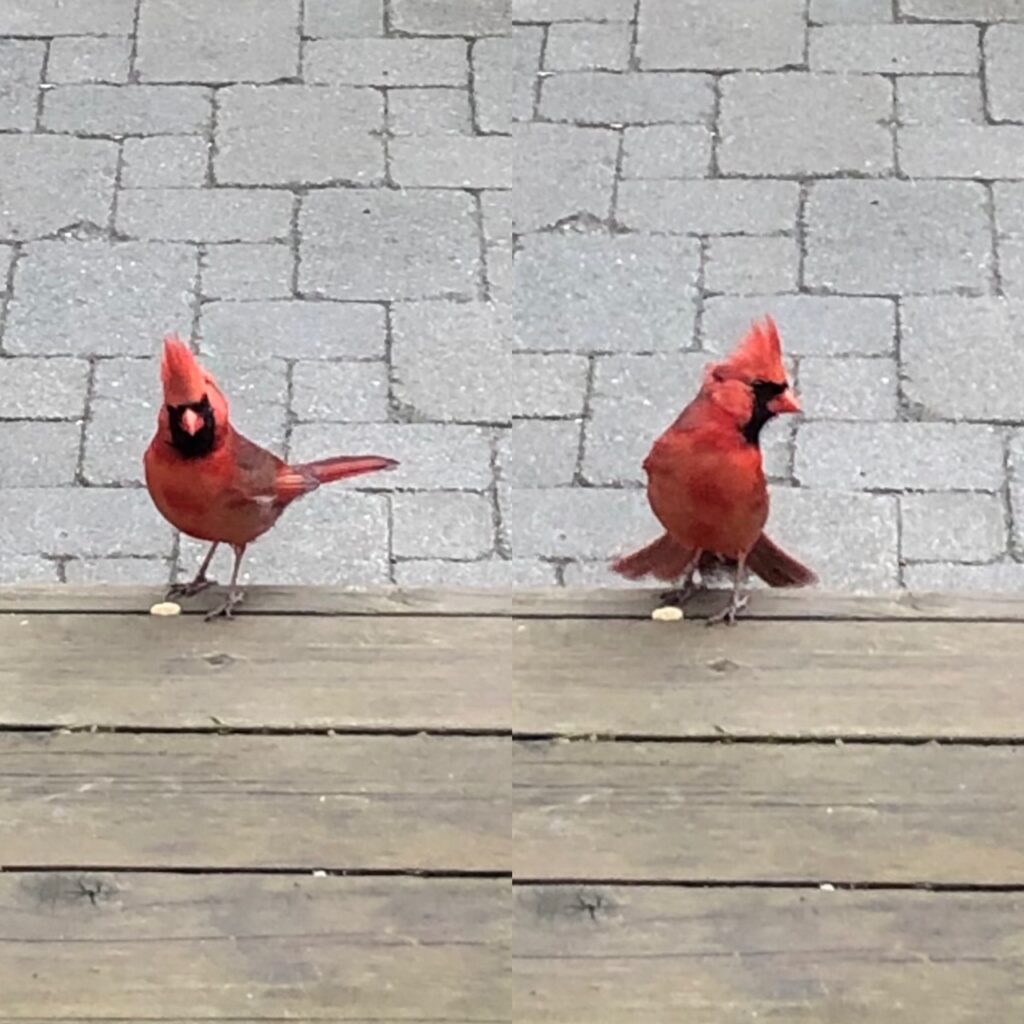
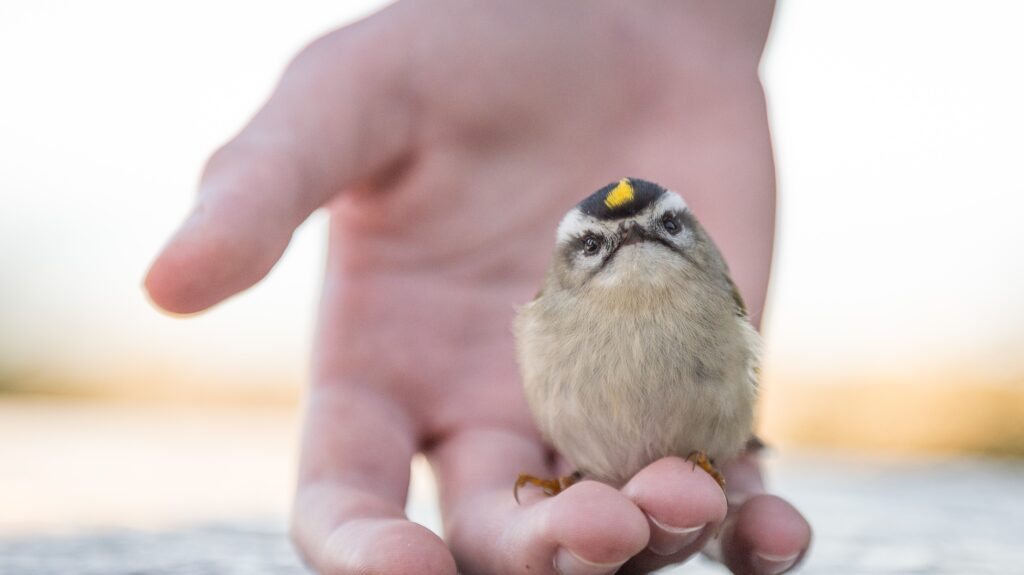
It is Easter Sunday, and my one-year anniversary at the wildlife centre. It’s become an important part of my life and a highlight of my week. But it is such a strange time there now, due to Covid 19, with much fewer animals in care than normal, as they are being fostered, cared for elsewhere, or released if safe to do so.
I was sad and disappointed to see that little Leontes is gone. I am glad to know that he is in good care, but I am truly saddened that I will not likely see him ever again. He will probably be released rather than returning to the centre. The snakes are gone into foster care, too. But I am happy to see Hashbrown and be able to care for the remaining bats, opossums, a very clean coyote, raccoons including a very funny little girl who should be more afraid of humans, a too-sweet skunk, a very calm gull, and other animal patients.
More small songbirds are coming in now, too: a robin, blue jay, yellow-bellied sapsuckers, juncos, sparrows, as well as a starling, and the mourning doves and pigeons as always.
Recently I’ve been able to hold a very laid-back gull, a gorgeous yellow-bellied sapsucker who is sadly in really rough shape (a small woodpecker with a beautiful bright red head, who looooves eating her orange slices despite a fractured beak and other injuries), and a tiny dark-eyed junco (a beautiful little fluffy rich slate-grey songbird), with no problem at all, for medication and treatments.
A little kinglet outsmarted me, though! Super tiny little fluffball of a bird with gorgeous yellow and orange head cap.
This one was my first in months – I had not handled songbirds since last autumn. And she escaped!
Two tiny kinglets had just arrived at the centre earlier on Sunday, and it was time for them to get oral medications, tiny droplets at a time. I was with staff member H, and when ready, I reached in under the fabric cover, into the terrarium to gently capture the first one. Which is very difficult when there are two in an enclosure, that is not big but big enough for them to fly from one end to the other, and to hide under their branches.
I should have taken out the branches. Didn’t think of that at the time. I did grasp one little kinglet, but I was being far too gentle, and it got out of my hand. It was still in the enclosure.
I then tried using the fabric cover as a scoop to push the birds into one area of the enclosure where I can then more easily grasp it. This works very well when there is one bird in the enclosure but is tricky when there are two or more together.
So I used the fabric, and had both kinglets in the far end of the terrarium. As I reached in to bring one out, it escaped and started flying around the room!
“Ruby-crowned Kinglets are fast-moving but quiet little birds…” says AllAboutBirds.com and that’s very true. Especially the part about fast.
We immediately turned off the lights, but of course escaped birds always go as high as possible toward the ceiling and fly back and forth from one end of the room to the other. Staff member H and I grabbed our nets and tried to carefully capture it. (In the meantime, the other kinglet was still under the fabric, in the enclosure.)
Staff member H netted it expertly after a few minutes. Tired little bird. I reached in, too-gently trying to grasp it, and it escaped again!
H netted it again and I covered her net with mine. I reached in and gently, firmly, grasped it in my hand, removed it from the net, and turned it around in my hand, so its head was between my index and middle fingers with my hand loosely fisted around the tiny bird. It is SO tiny and SO fragile! Among the smallest of the songbirds who come in for care, at about 3 inches tall and weighing about ¼ of an ounce… much smaller than a warbler or a chickadee.
But once securely in my hand I held it no problem, and H gave it 3 different oral medications, before I put it back with the other kinglet in the terrarium. Certainly not final sign-off worthy work, but I feel blessed to have had the experience and practice handling tiny songbirds again.
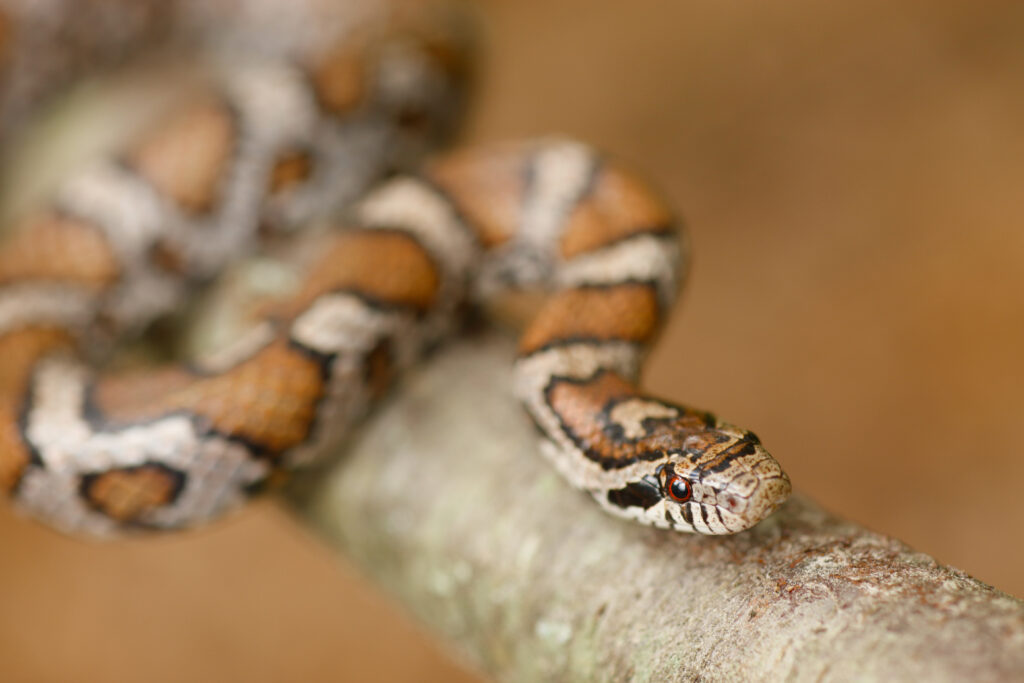
At the end of the day, I discovered that the gorgeous milk snake had shed!
I was able to remove the shed skin in one perfect piece, head to tail. And place it gently in-tact in a large Ziploc bag that I labelled with her patient number and the date on it.
Everyone has been waiting for her to shed. Which is not surprising as her wounds heal. She is the only snake who has not been placed in foster care while staffing is reduced due to Covid19, because she has been healing from some significant wounds on her belly. I noticed about 3 weeks ago that her eyes were starting to get cloudy – a sign of preparing to shed.
The beautiful snake was hiding under the large rock in her enclosure as I removed the shed skin. I let staff member J know, and since snakes don’t eat much before shedding, I was asked to bring her a little feast of a variety of small foods. Well no problem – except for the earthworms from outside.
I grabbed a fork from the kitchen and first went out the back door and into the ditch area to look for worms. I promptly stepped deeply into muck, covering my right shoe and pant hem. Ugh. No worms.
Then I went over the road to the farther ditch to dig and look under garbage in the wet ditch. No worms.
I have no idea where to find worms. On my way back into the centre, taking a route back that appeared drier, I slipped into the deep muck. Covered my left shoe. Ugh.
Ok, so wiped my feet as well as I could on the grass, then on the door mat, I went inside and went to the room where the dirty kennel cabs and waterfowl mats are hosed down. I hosed down my shoes and pants. Soaking wet shoes and socks now. Still no worms. I know nothing about wild worms.
So I went out the front door, to the park-like area in front of the building. Dug my fork into the grass. No worms. Dug into the slope of the planted area, covered in leaves. No worms. But there was a nice surprise: as I was returning to the TWC I noticed a groundhog looking at me!
A groundhog has made a home in the planted mound, in the park-like space in front of the Centre. What a treat to see her looking at me looking at her looking at me. Then back in to the Centre. I asked A if she knew where to find worms. Nope. I asked T. Good thing I asked T! She told me where to look. It was outside of course but could not be any closer or easier. I found two small wild earthworms. Thank goodness!
The milksnake’s post-shed Easter Sunday feast was complete and placed in a tiny dish in front of her, for her to enjoy.